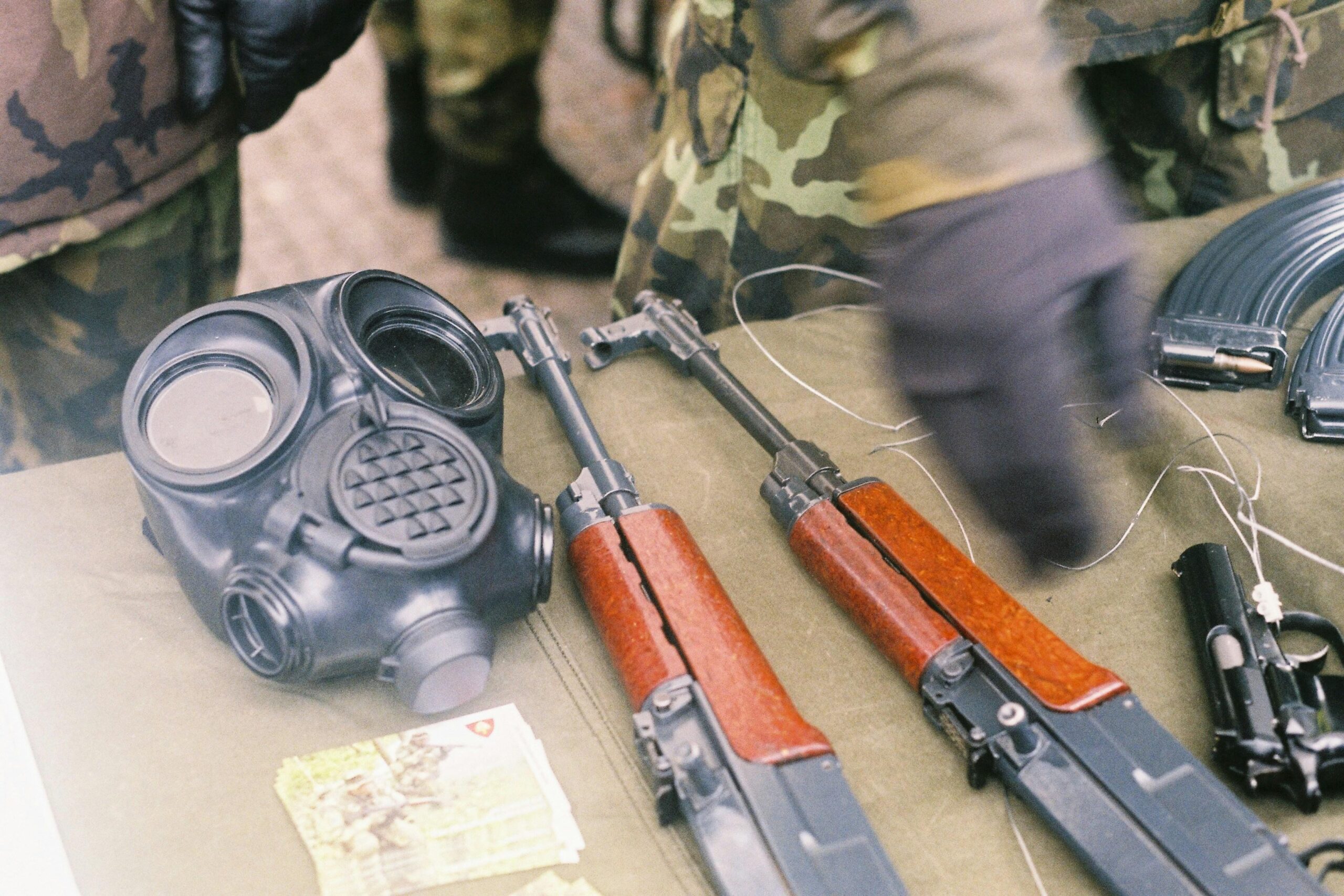Step into the hidden corridors where danger and secrecy intertwine—the shadowy world of weapons smuggling by crime groups. Behind headlines and flashing sirens lies a complex network of smugglers, brokers, and enforcers who trade in firepower with chilling precision. What drives these clandestine operations? How do these underground channels manage to evade detection and fuel violence across borders? Join us as we unravel the mysteries of this dark trade, shedding light on the covert routes and shadowy figures shaping the global flow of illicit arms.
Table of Contents
- How Crime Networks Master the Art of Concealment and Transport
- The Role of Technology in Fueling Modern Weapons Smuggling
- Understanding the Global Impact and Hidden Consequences
- Strategies to Combat and Prevent Illegal Arms Trafficking
- Final Thoughts
How Crime Networks Master the Art of Concealment and Transport
At the heart of sophisticated weapons smuggling operations lies an intricate dance of deception and logistical precision. Crime networks leverage a blend of innovative concealment techniques and complex transport routes, constantly adapting to evade detection by law enforcement. From disguising shipments within legitimate cargo to using fake documentation, these groups excel in weaving their illicit freight through a web of legitimate channels. Their arsenal includes hidden compartments in vehicles, camouflaged packaging, and even encrypted communication methods that orchestrate every step without raising suspicion.
Transport itself is an art form mastered through detailed knowledge of geography and border security weaknesses. Smugglers exploit the gaps created by jurisdictional boundaries, shifting routes at a moment’s notice to avoid patrols and checkpoints. Key tactics include:
- Utilizing remote, less monitored border crossings to slip under the radar
- Coordinating multi-modal transport—combining trucks, boats, and even drones
- Recruiting insiders with access to transportation or customs systems
- Storing weapons temporarily in safe houses to break shipments into smaller, less detectable loads
The Role of Technology in Fueling Modern Weapons Smuggling
In the clandestine corridors where crime syndicates operate, technology functions as both a shield and a sword. Sophisticated encryption tools enable smugglers to coordinate across borders without detection, using secure messaging apps and dark web marketplaces to arrange transactions. Drones and GPS technology facilitate covert transportation, allowing shipments to evade traditional checkpoints with pinpoint accuracy. Furthermore, 3D printing has begun to play a role in producing untraceable firearm components on-demand, revolutionizing the supply chain and making it harder for law enforcement to intercept complete weapons before they reach the streets.
Digital currencies like Bitcoin inject an additional layer of anonymity into these illicit exchanges, reducing reliance on conventional banks and cash movement that can be tracked. Crime groups also leverage social media platforms to recruit couriers and identify vulnerable smuggling routes, often exploiting real-time traffic and weather data. Collectively, these advancements blur the lines between the physical and digital realms, creating an intricate web that is extremely challenging to unravel. Key technological elements include:
- Encrypted communication networks for untraceable planning
- Smart tracking systems enabling seamless cross-border logistics
- Digital currencies securing transactional privacy
- Emerging manufacturing tech like 3D printing for weapon parts
Understanding the Global Impact and Hidden Consequences
Weapons smuggling by criminal organizations doesn’t just feed local violence—it ignites a complex web of repercussions that ripple across continents. The influx of illegal arms destabilizes fragile governments, undermines peace efforts, and fuels conflicts that spill over borders. Economies suffer as illicit trade diverts resources away from legitimate industries, while communities bear the brunt through increased crime rates and social unrest. Behind the scenes, these networks cleverly exploit gaps in international law enforcement, creating supply chains that are almost invisible yet devastatingly effective.
Beyond the immediate violence, the consequences manifest in subtle but deeply troubling ways. Environmental degradation, a rarely discussed aspect, results from smuggling routes cutting through protected forests and wildlife reserves, leaving ecological scars. The human cost also extends to trafficked individuals coerced into roles supporting these operations—often forgotten victims of this shadow economy. Key hidden effects include:
- Corruption infiltrating government institutions, eroding public trust
- Disruption of social cohesion as armed groups sow fear and division
- Increased difficulty in addressing humanitarian crises due to armed instability
- Diversion of law enforcement efforts away from other serious crimes
Strategies to Combat and Prevent Illegal Arms Trafficking
Confronting the multifaceted menace of illegal arms trafficking demands a blend of innovation, vigilance, and cooperation. Enhanced intelligence sharing between national agencies and international bodies creates a robust network that tracks suspicious transactions before weapons reach criminal hands. Technology plays a pivotal role too; from AI-powered surveillance systems spotting illicit trade patterns to blockchain-enabled tracking of legitimate arms sales, the digital age offers powerful tools to disrupt smuggling routes. On the ground, empowering local communities through educational initiatives fosters awareness about the devastating consequences of illicit weapons, turning potential bystanders into active watchdogs.
Another crucial layer of defense lies in strong legislative frameworks reinforced by relentless enforcement. Harmonizing laws across borders helps close the gaps traffickers exploit and imposes heavy penalties that serve as deterrents. Collaboration with the private sector, especially in industries like shipping and logistics, strengthens checkpoints where illicit goods might otherwise slip through unnoticed. Practical steps include:
- Regular audits of arms dealers and strict licensing protocols
- Training programs for customs officials to recognize falsified documents and suspicious behavior
- Public-private partnerships to enhance transparency in supply chains
Final Thoughts
Peering into the shadowy world of weapons smuggling reveals a complex web of crime groups, secret routes, and high-stakes risks that few dare to explore. While this underground market thrives in the shadows, shining a light on its inner workings is the first step toward understanding—and ultimately disrupting—its dangerous flow. As we continue to uncover the hidden stories behind illicit arms trade, one thing becomes clear: the battle against weapons smuggling is as much about unraveling human networks as it is about controlling the weapons themselves. Stay curious, stay informed, and keep questioning what lies beneath the surface.












